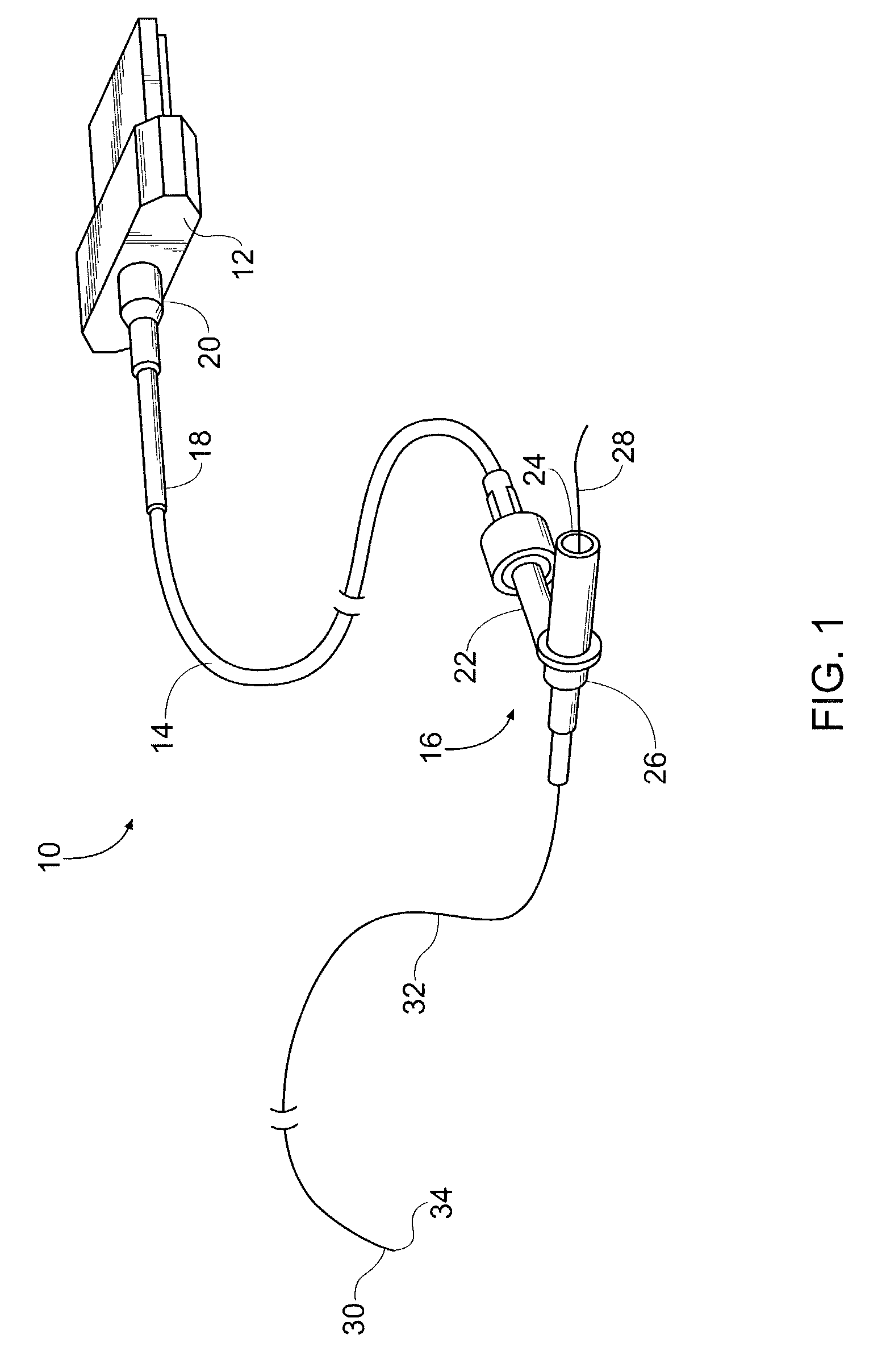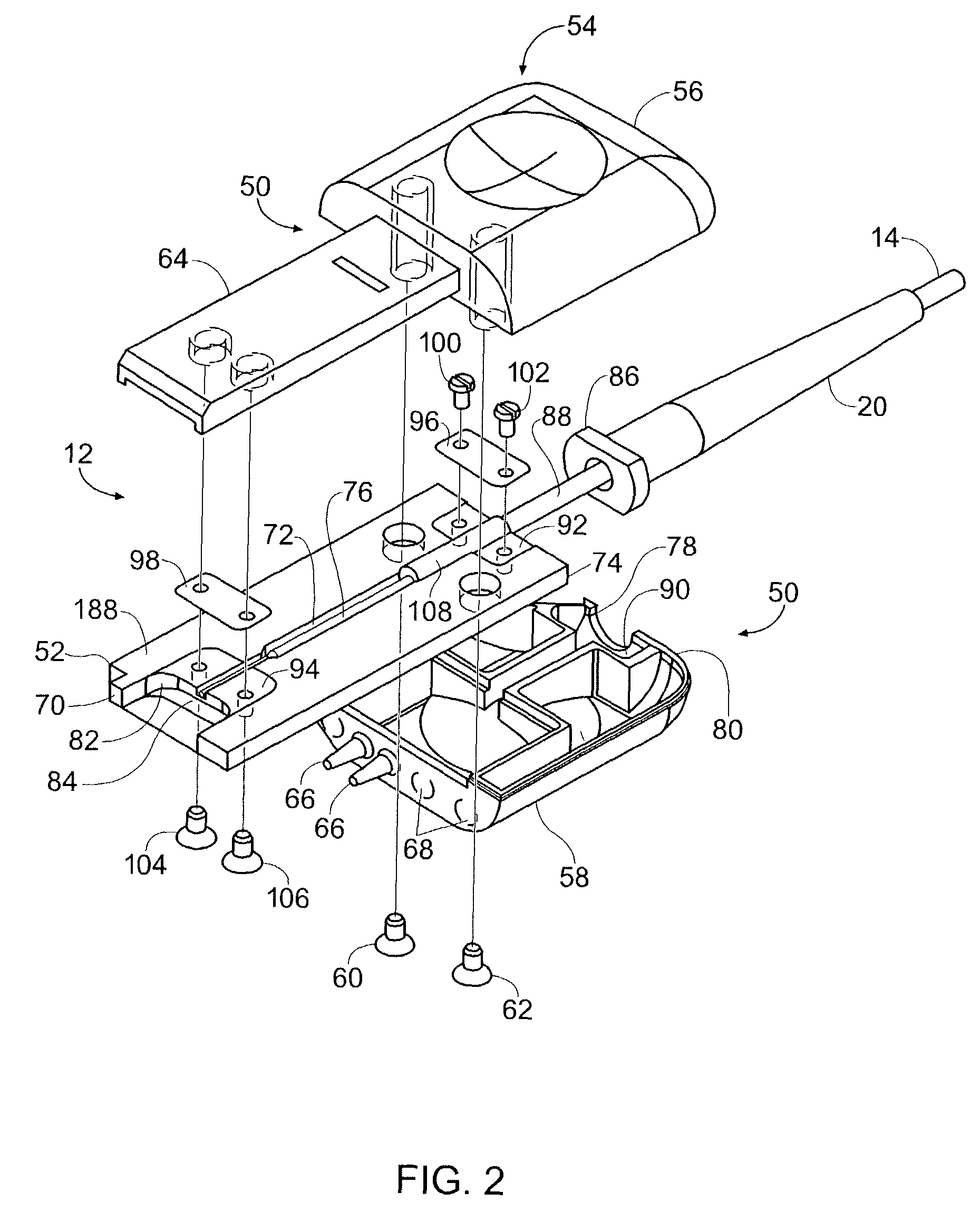Proximal coupler for optical fibers
a technology of optical fibers and couplers, applied in the field of optical waveguides, can solve the problems of affecting the performance of the proximal coupler, and inconsistent fiber packing between the couplers, so as to eliminate any damage to the optical fiber, and improve the performance of the proximal coupler.
- Summary
- Abstract
- Description
- Claims
- Application Information
AI Technical Summary
Benefits of technology
Problems solved by technology
Method used
Image
Examples
Embodiment Construction
[0021]FIG. 1 is a perspective view of a fiber optic-catheter assembly 10 and proximal coupler 12. As noted earlier, the proximal coupler provides an interface between the fiber optic-catheter assembly 10 and a light source (e.g., laser, not shown). The assembly 10 includes a light conveying cable 14, which contains optical fibers that direct light from the proximal coupler 12 to a bifurcating adapter 16. A proximal end 18 of the cable 14 includes a strain relief sleeve 20, which is typically made of coiled metal or an elastomer and helps reduce damage to the assembly 10 due to forces exerted on the cable 14 during handling. Note that throughout the specification the terms “proximal” and “distal” refer to the location of a component of the assembly 10 relative to the light source-a component that is nearer to the light source is “proximal,” whereas a component that is further away from the light source is “distal.”
[0022]As shown in FIG. 1, the bifurcating adapter 16 includes a pair o...
PUM
 Login to View More
Login to View More Abstract
Description
Claims
Application Information
 Login to View More
Login to View More - R&D
- Intellectual Property
- Life Sciences
- Materials
- Tech Scout
- Unparalleled Data Quality
- Higher Quality Content
- 60% Fewer Hallucinations
Browse by: Latest US Patents, China's latest patents, Technical Efficacy Thesaurus, Application Domain, Technology Topic, Popular Technical Reports.
© 2025 PatSnap. All rights reserved.Legal|Privacy policy|Modern Slavery Act Transparency Statement|Sitemap|About US| Contact US: help@patsnap.com



